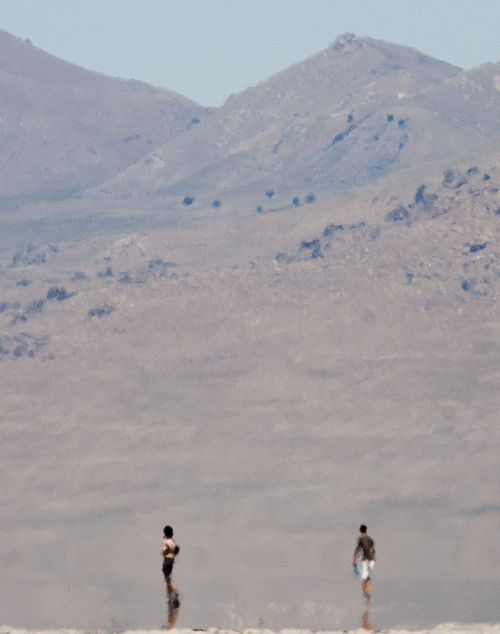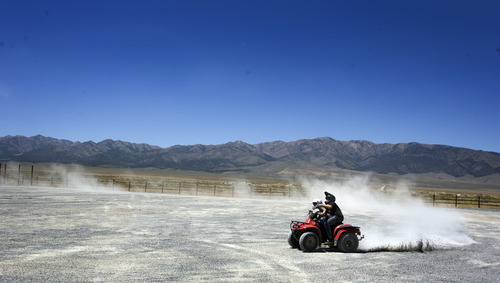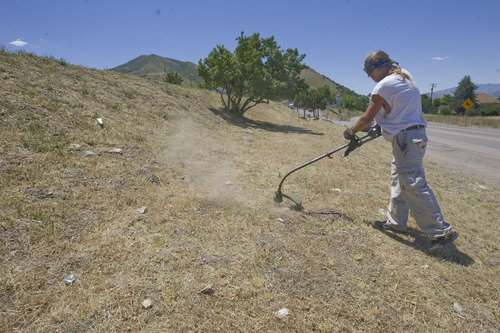This is an archived article that was published on sltrib.com in 2013, and information in the article may be outdated. It is provided only for personal research purposes and may not be reprinted.
June was Salt Lake City's second driest month ever.
The National Weather Service recorded just a trace of precipitation over its 30 days.
"It wet the can," weather service hydrologist Brian McInerney said Monday. "But it's not even enough to measure."
Only October 1958 was drier — the sole instance since 1928 that not a drop of rain fell for an entire month at the official measuring station for the city.
The implications of a no-rain June could be seen and felt everywhere in Utah on Monday, the first day of what is usually the state's driest month and continuing what is a 2-year-old drought.
Randy Julander, a hydrologist with the Natural Resources Conservation Service, said streams, rivers, lakes and reservoirs are drying up fast. He called the situation grim and getting worse because:
• Soil moisture is just 8 percent of normal in the mountains.
• Rivers statewide are running at 2 percent to 25 percent of normal flow.
• Irrigation districts have cut back deliveries from 20 percent to 70 percent of normal.
• It's been 40 to 50 days since "significant rain" has fallen.
"You just look at it, shake your head and say it couldn't get any worse," Julander said. "Then it does."
As Independence Day week visitors flocked to state parks for boating, swimming and fishing, they found reservoirs just partly full.
"Surface areas on the lakes are going to be shrinking," said Ty Hunter, boating program director for the state parks. "It's gonna hurt [recreation] and the drawdown of water is going to increase with this weather we're having."
At Steinaker State Park near Vernal, one lane of the two-lane boat ramp is closed because the lake is just half full.
And at Yuba Lake near Levan, the upside of low lake levels is more camping spots, said Cheston Slater. He noted there are 300 primitive sites on the dry beaches, along with the 89 in developed campgrounds.
Forecasters don't show much hope for rain through the July Fourth holiday.
The weather service expects the heat wave — which has produced a smattering of record-high temperatures in Utah — to continue through Sunday with highs hovering around 100 in northern Utah. The chance of rain is around 10 percent until it jumps to 30 percent with the weekend.
Jason Curry, spokesman for the Utah Division of Forestry, Fire and State Lands, noted that his agency is prepared for the state's fire season.
"It's just as you'd expect, with the low moisture level," he said.
Typically, August is Utah's second driest month, and June is third.
"July is going to be hotter and drier," he said, "and we have to continue to take precautions."
Delta farmer Dale Roper said he's been taking care with the irrigation water he gets from the Abraham Irrigation Co.
He grows alfalfa, wheat and barley that normally rely on June moisture. This year, water from Yuba Lake is keeping crops green.
"There are a few that are starting to worry," he said of his fellow farmers. "These dry days are probably going to make it so I'll get in trouble like everyone else."
Twitter: @judyfutah
Bob Mims contributed to this story.









